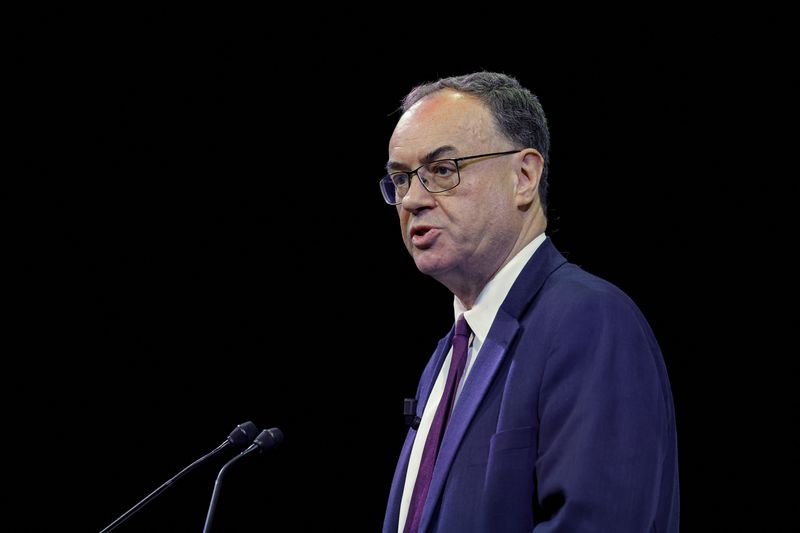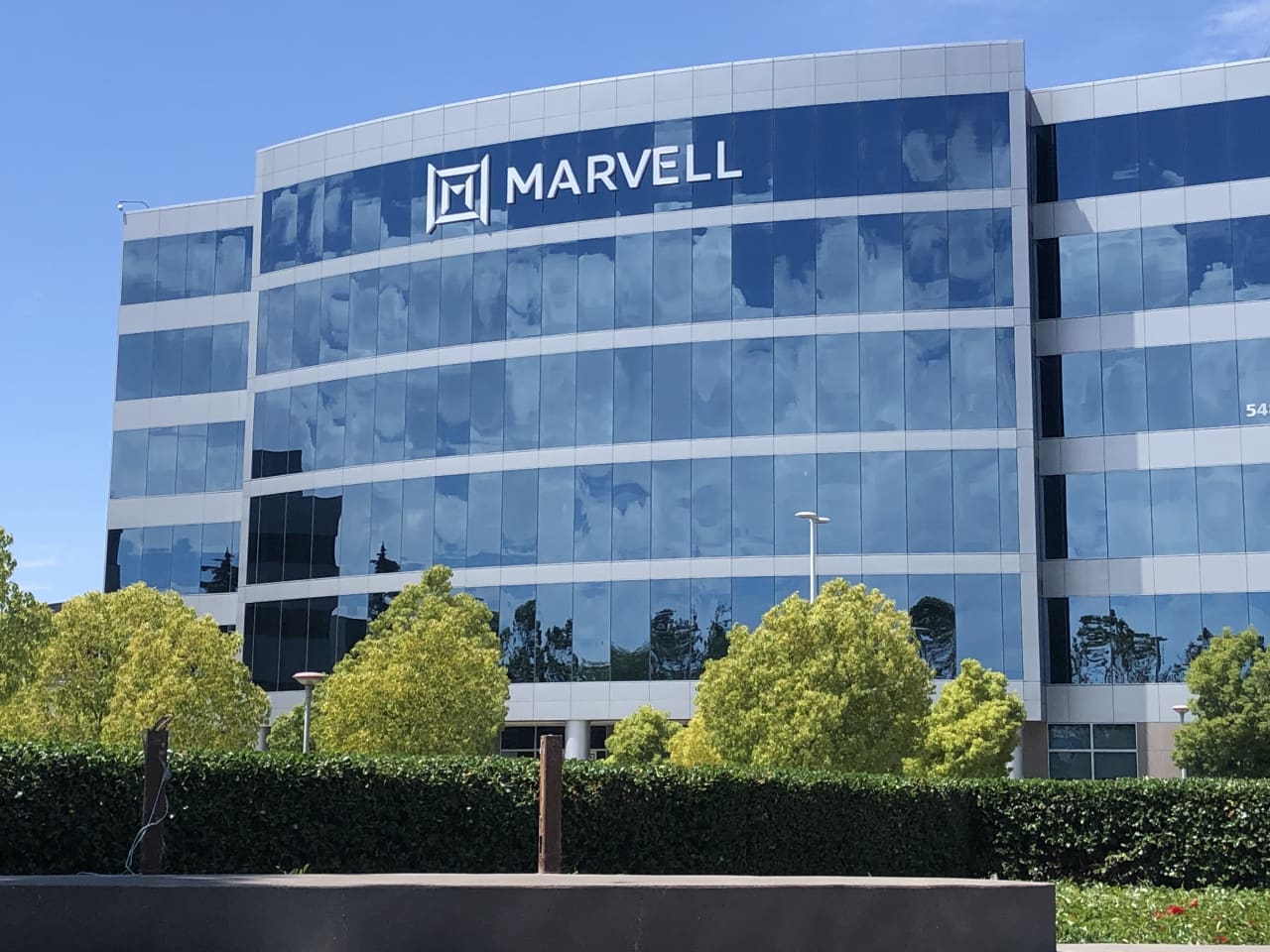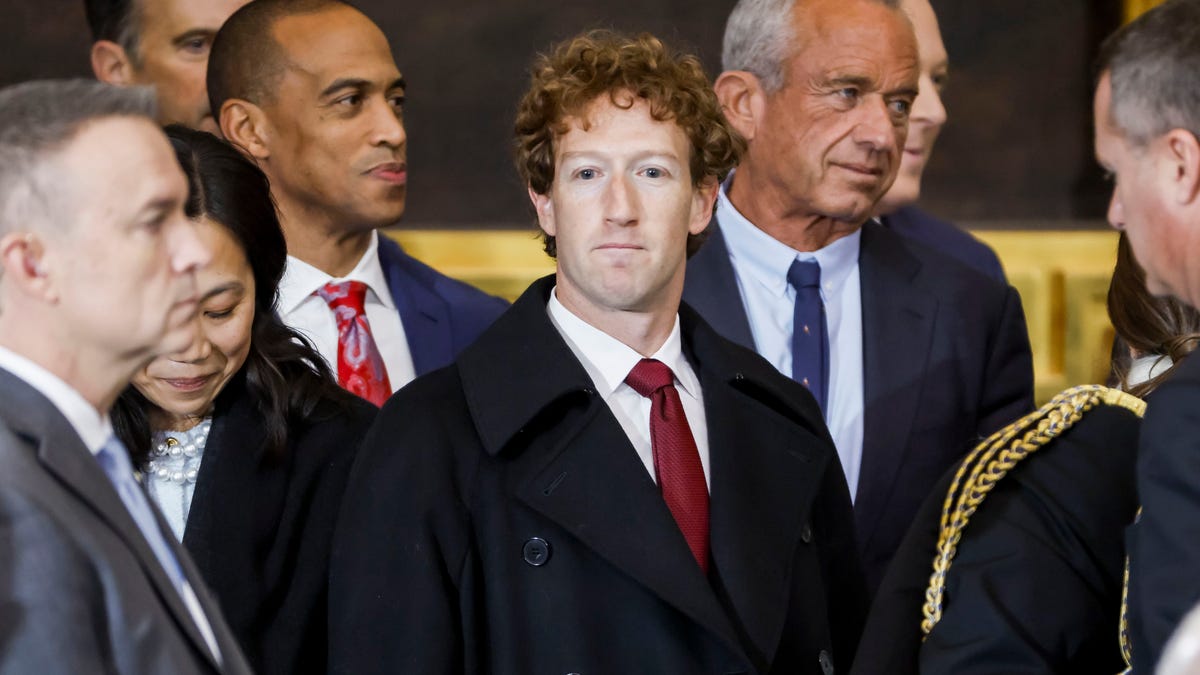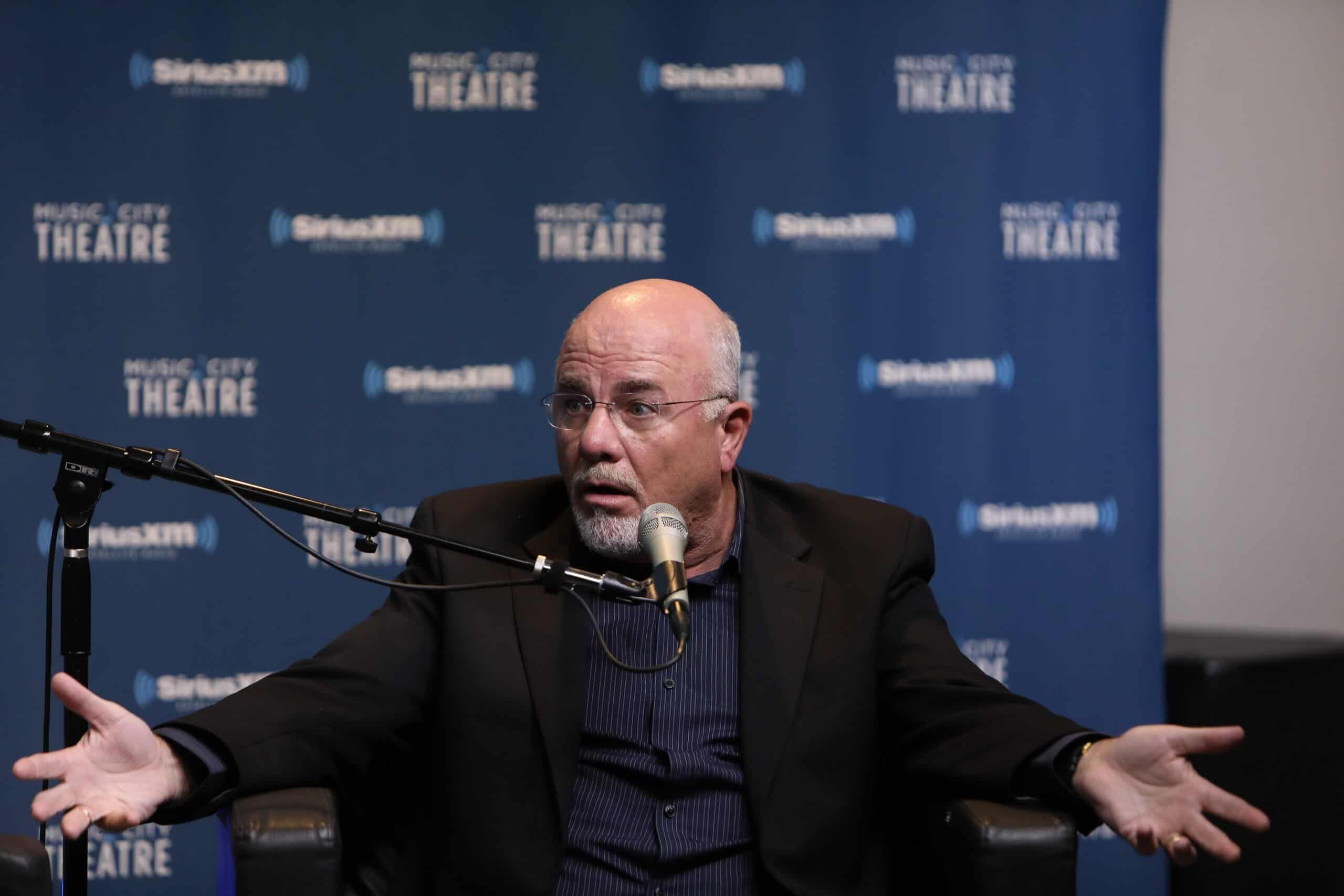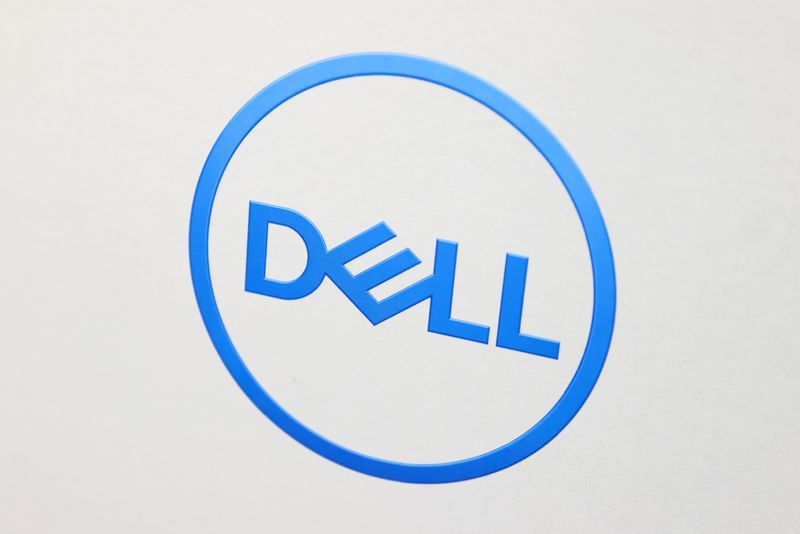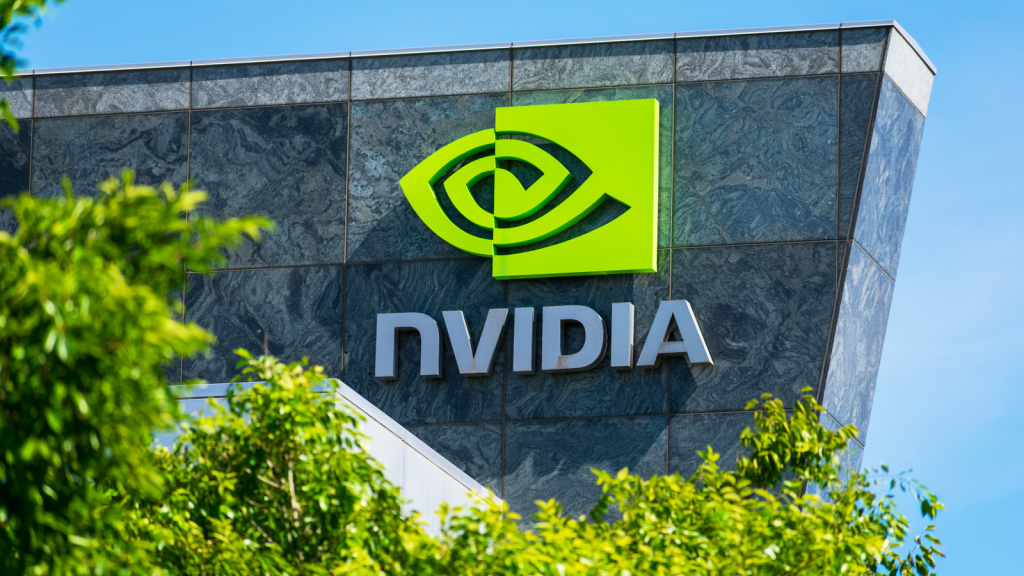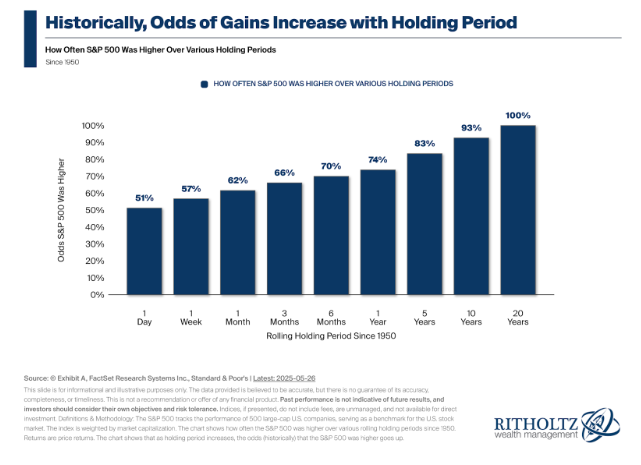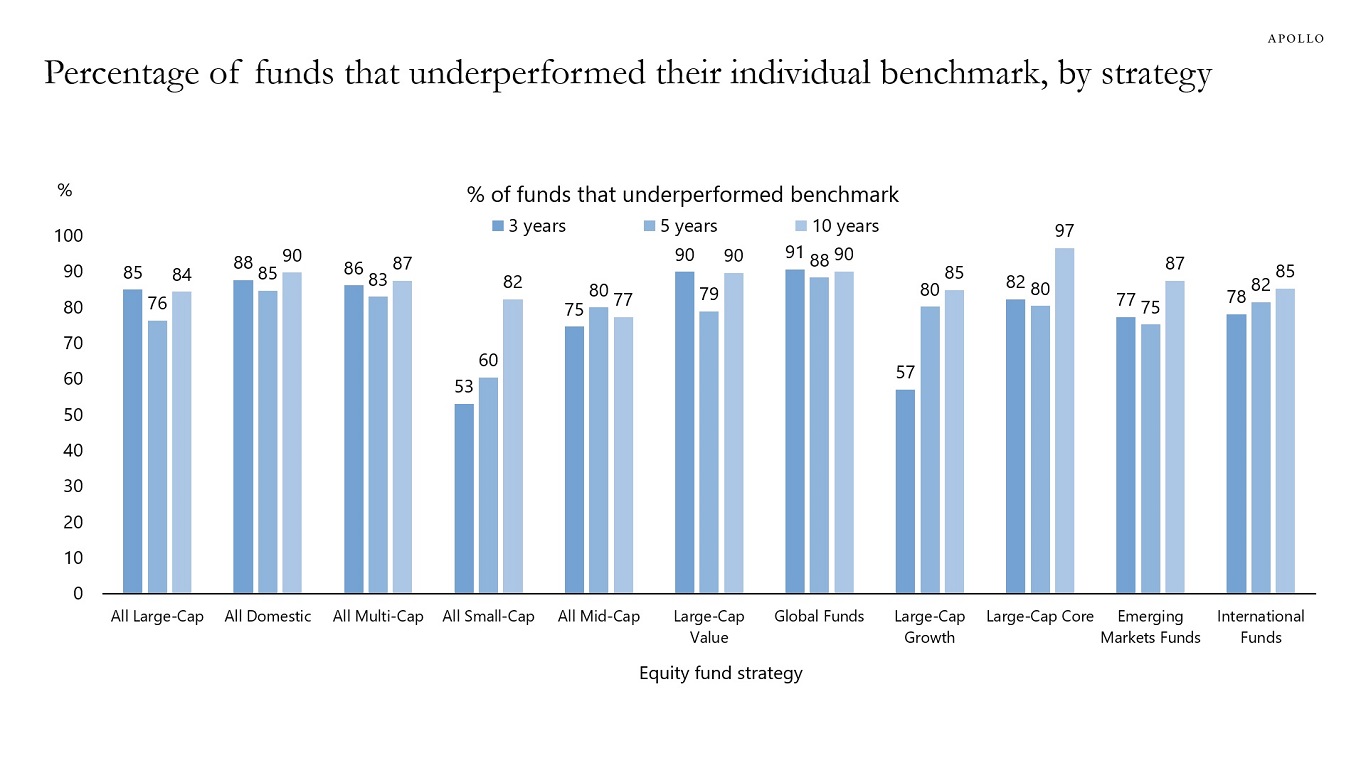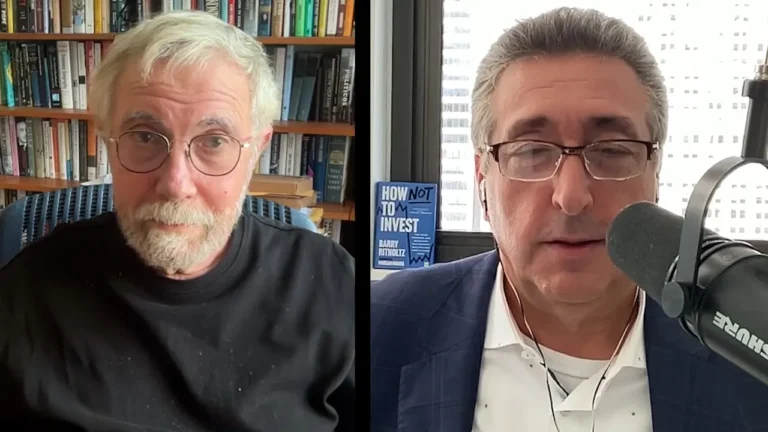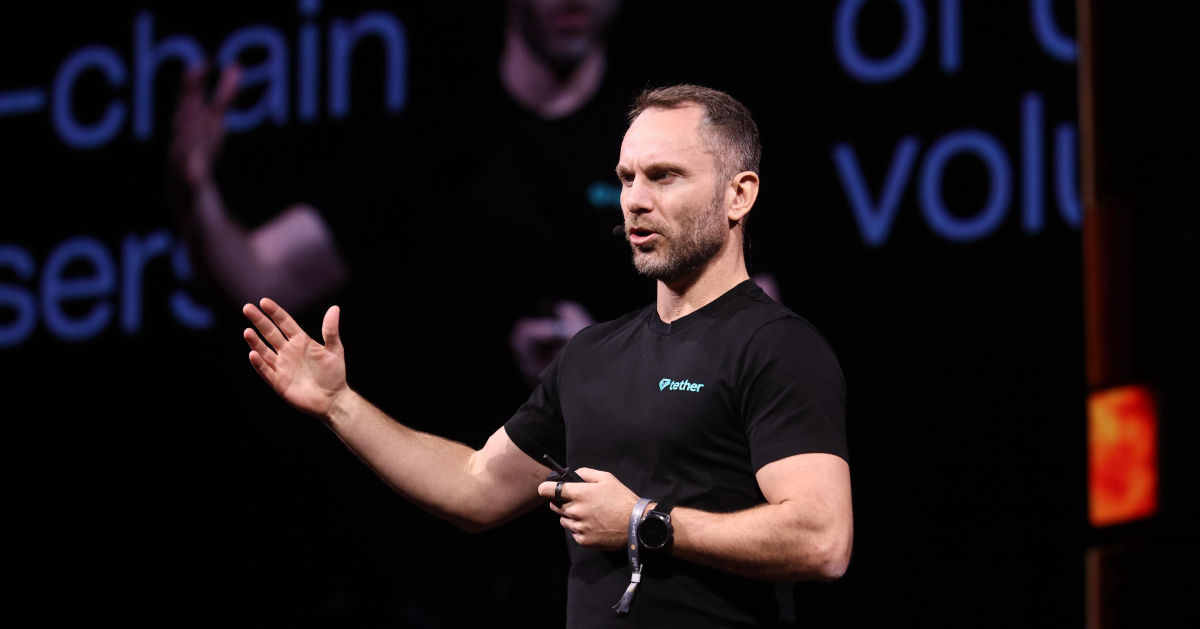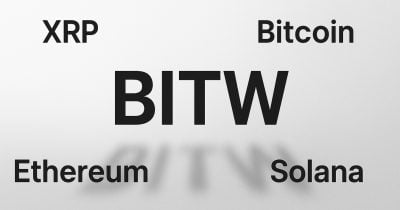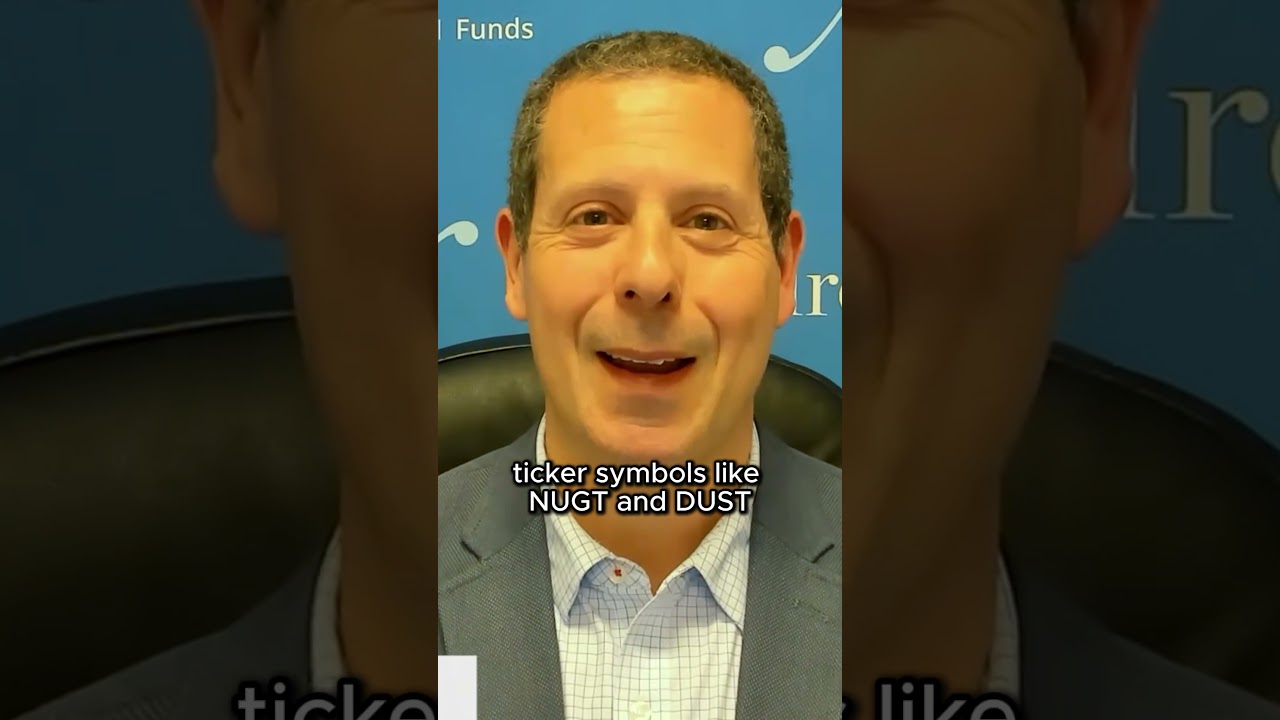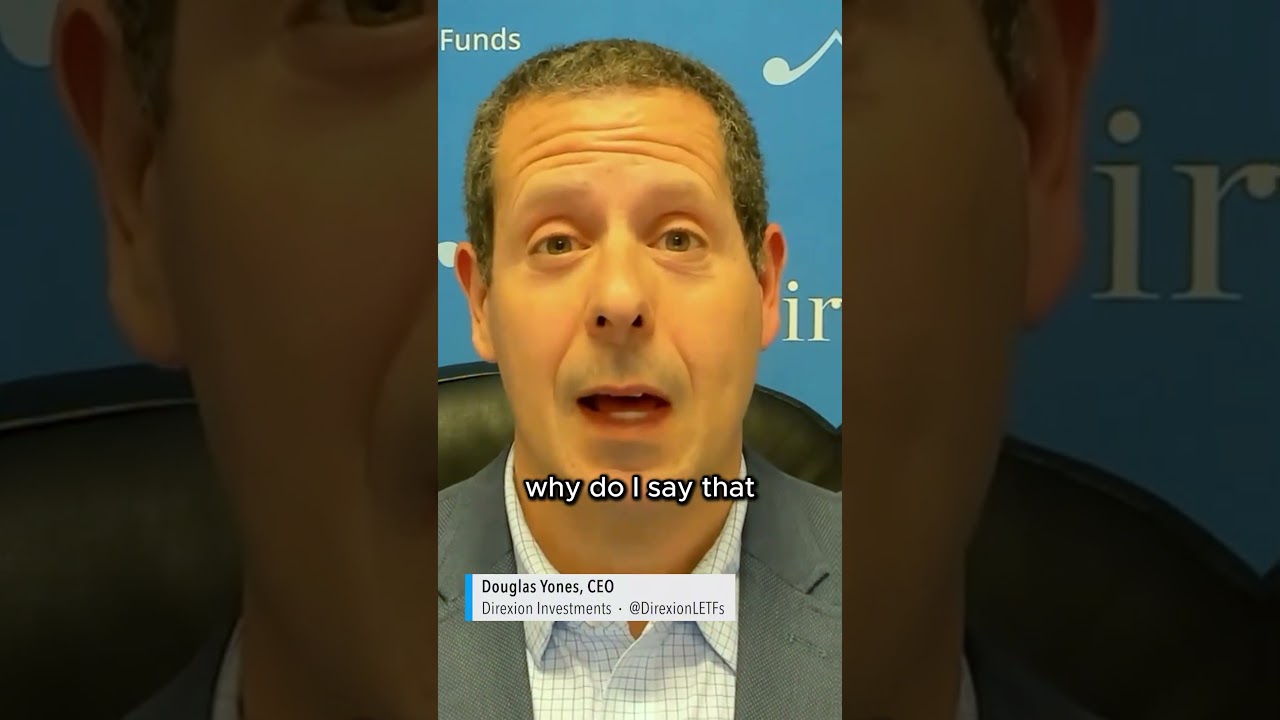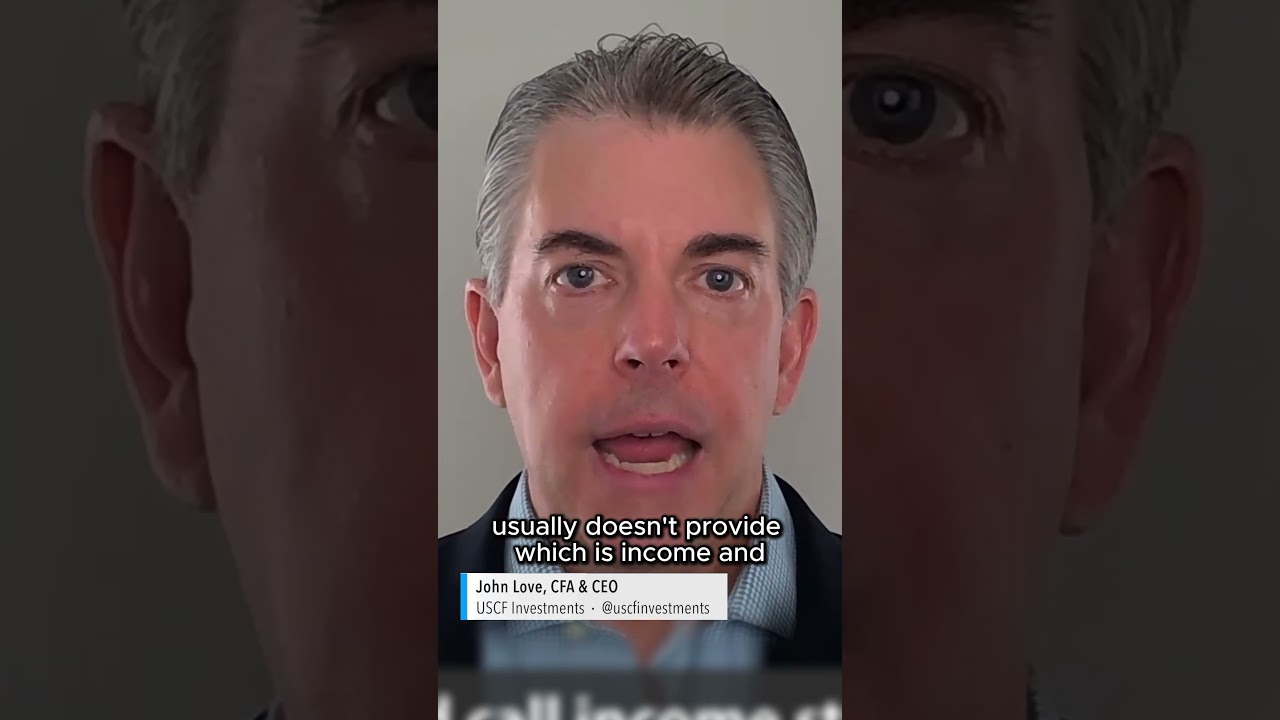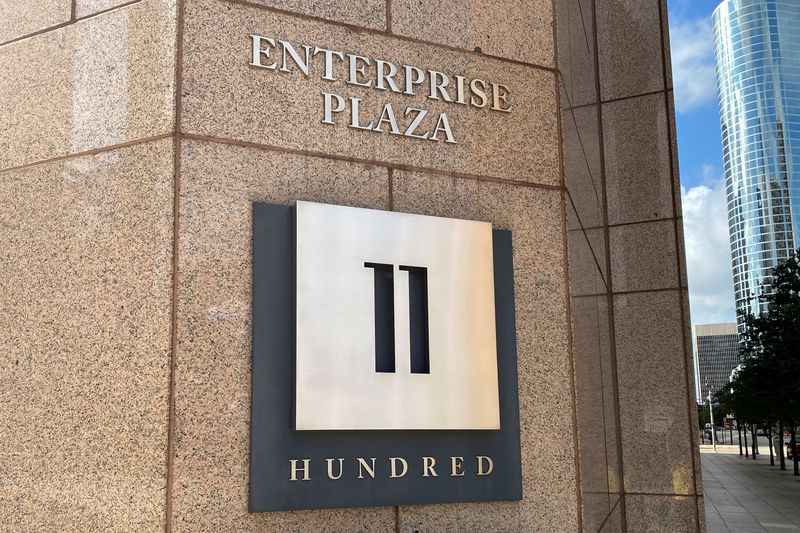How the CEO of Lumen Technologies is building the backbone of the AI economy
"We're thinking about everything completely differently. It's one of my favorite things to do. I love leading change," Johnson told Fortune.

On this episode of Fortune’s Leadership Next podcast, cohosts Diane Brady, executive editorial director of the Fortune CEO Initiative and Fortune Live Media, and editorial director Kristin Stoller talk to Lumen Technologies CEO Kate Johnson. They talk about Johnson’s vision of the AI future; returning from retirement; and how she stays composed as a leader.
Listen to the episode or read the transcript below.
Kate Johnson: The culture was play not to lose, and that was very Telco. So Telco, you know, old, copper infrastructure declining, no innovation.
Diane Brady: Preserve, preserve.
Johnson: Preserve, preserve. He who dies last wins. So you play not to lose. You don’t want to lose customers, you don’t want to lose any money. You harvest the cash to pay the dividend. And my assignment from the board was completely different. We want you to pivot the company to growth and leverage this fiber asset. And so we had to shift from play not to lose to play to win, literally everything has to change.
Brady: Hi, everyone. Welcome to Leadership Next, the podcast about the people…
Kristin Stoller: …and trends…
Brady: …that are shaping the future of business. I’m Diane Brady.
Stoller: And I’m Kristin Stoller.
Brady: This week, we’re talking about Lumen.
Stoller: Little shoutout to Severance.
Brady: It’s creepy, and it’s not Severance. Let’s point that’s out.
Stoller: It’s not, it’s Lumen Technologies, not Lumen Industries. There’s no Adam Scott, no Ben Stiller, just Kate Johnson.
Brady: Kate Johnson, who’s been transformative in this company. And one of the things that fascinates me when I first read about her, it reminded me of John Chambers and Cisco. I did a book with him, and I remember him talking about—there were a lot of router companies in the early ’90s, and when he talked about Cisco becoming the backbone of the internet: A. People understood it. It was great for attracting talent, and it’s almost like, if you build it, they will come. Lumen is really the backbone of the AI economy. That’s the way I think about it.
Stoller: It really did. They went from a sleepy telecom company to now they’re just being talked about because of AI and because it’s so buzzy. I first heard about them, I think it was last August, when they’d done this big deal with Corning, and I was writing a story about Corning, which is this old glass company. They’re making these…
Brady: …formerly old glass, now they are new tech as well.
Stoller: Yes, new tech, which is next-generation fiber-optic cables, which are these really thin human-hair-like strands that are powering all the data centers. And Lumen is brokering the deals, giving it to Microsoft, and they get 10% of Corning’s actual cables to do those deals, so.
Brady: That’s cool. Well I do think a lot of this took place under Kate. She was the CEO of the U.S. operations of Microsoft. So of course, that’s a good background to have, and she’s somebody who’s talked a lot about a culture of empathy while also being the transformer. So that is not an easy road to go down.
Stoller: Definitely not. It’s hard to transform a company culture. And I think, I think she’s trying. She’s trying hard.
Brady: Are we going to ask her about being a woman? There’s so few of them in the Fortune 500.
Stoller: I think it’s so important to have that representation, and I don’t know, could be good advice, especially for other people like me.
Brady: Lots to talk about, and we’ll have plenty—I’m sure she’ll have plenty to say. She was terrific at our Fortune Global Forum. I’m looking forward to a really good conversation, and we’ll be right back with Kate Johnson.
Brady: We’re entering an era of innovation unlike any we’ve witnessed before. You all see it: The pace of technological change is staggering, and it’s challenging for any leader to keep up. We spoke with Jason Girzadas, the CEO of Deloitte US, which is the longtime sponsor of this podcast. Here’s his advice for leaders on how to navigate this new world.
Jason Girzadas: There’s probably nothing more important for CEOs, no matter what organization they’re leading, to really be thinking about technology’s impact on our workforce. It’s really a function of, how do you think about technology in concert with your workforce? We at Deloitte talk about it as the age of width, the age of technology with your workforce, and really embracing this idea of the codependency of technology and workforce. We’re also an environment of a very tight workforce where there’s a scarcity of top talent. That’s going to be the challenge for organizations, to demonstrate to top talent that they can grow and evolve the work that they do, working with leading technology in a very aligned way. Finally, it’s what top talent really wants in an organization, is to learn and grow and to be part of an organization that’s supportive of them actually embedding technology in their work.
Brady: So I remember talking to John Chambers once about: with Cisco, he said how it was so important the branding of these enterprise tech companies, that he could have been a router company, but instead he was the backbone of the internet. You, too, are a backbone at Lumen. Tell me how you think of the brand and how you sort of present it to the marketplace.
Johnson: Yeah, Lumen has become the trusted network for AI. We started a couple of years ago as a sleepy telecom and recognized this huge opportunity to leverage our core crown jewel asset, the fiber network. It’s national, it’s got amazing coverage, it’s got unique routes. And it’s special because AI needs data, data needs data centers, and data centers need to be connected. So we went from a sleepy telco to critical infrastructure, building out the backbone for the AI economy.
Stoller: Okay, I was telling Diane I wrote a story late last year about Corning, who I know you have a partnership with, who’s making these new generation fiber-optic cables. And I think not many people recognize exactly how AI works and how it is these cables are powering it. Can you walk us through how it works exactly, and what your business is doing to make it work?.
Johnson: Sure, so [I] love Corning. What Corning is doing for Lumen and the AI economy is they are continuing to innovate fiber solutions. So just think about light pulses through a piece of glass. It sounds like, well, how much can you do to innovate that? Well, it turns out, a whole lot. And the latest innovations that Corning has brought to the marketplace allow Lumen to as much as quadruple our capacity in the existing network. Why is that important? Because AI produces an enormous amount of data, like huge amounts of data, and it’s growing every single day. As a matter of fact, I spend a lot of time with the hyperscalers, and the COO of one of the hyperscalers told me they have not yet seen diminishing returns on the algorithms from a data volume perspective. More means more value and smarter algorithms, which is kind of interesting because they’re throwing a ton of data at it. So to build the AI economy, the backbone needs to be able to carry a huge amount of data. It has to have capacity for it, and Corning is the great unlock for that.
Stoller: So you need to fit, you know, the same amount of these cables into the same space in the data centers, but you just need more of it, right?
Johnson: Yeah, so there’s two parts to really think about. There’s the physical part, which I think is what traditionally, everybody has thought of for our business. You’ve got, you know, conduit in the ground. You’ve got cables in that conduit, and you’ve got fiber in those cables, and it’s a math problem, and it’s fixed. And what we’re kind of proving is not really anymore, because we have, we can innovate the equipment at the ends of the fiber strands, and we can innovate the fiber itself to really unlock the capacity equation. And that’s kind of what we’re working on right now. That’s the real difference maker, but that’s the physical story. What’s really interesting is the digital layer that we’ve built on top. So we announced eight and a half billion dollars worth of deals with the hyperscalers and large technology companies and social platforms last year. That’s what surprised the world. That’s how Lumen became very relevant and recognized as the trusted network for AI, that was only the start of it. That’s building the ecosystem. We got a network, and we’ve got these hyperscalers all connected in that ecosystem. The differentiator is the digital platform to make it easy for modern digital companies to consume network services.
Brady: You know when you talk about relevance, of course, cultural relevance. And those of us who watch Severance, the word Lumen evokes something very different. How has that impacted just the business? Because, of course, you’re in the zeitgeist now, and everybody’s like, Oh, Lumen.
Johnson: Okay, so it’s fun. Yeah, it’s fun to be associated with a TV show. And the commonality is, I think Lumen, on Severance, thinks a lot about data, and so do we, but that’s kind of where it ends.
Stoller: Do you have macro data refinement?
Johnson: No, but you know what? Our network is required for it. So the thing is, our cultures are so different, right? Culture at Lumen has been the differentiator. It enabled us to take this company on the brink of obsolescence and make it relevant, make it modern, make it agile and make it critical.
Stoller: Have you leveraged it in any way? Have you met the actors? I mean, it just seems just too perfect.
Johnson: Not yet. But you know, there’s, there’s always an opportunity on the horizon.
Brady: The word Faustian pact doesn’t really evoke—you don’t have a big headquarters with like, circa 1980 technologies. That’s…
Johnson: That’s right. That’s right. We’re modernizing and simplifying everything, including our real estate footprint. So that’s also where we sort of separate.
Stoller: Well I feel like, speaking of the ’80s, the telecom industry has been an industry that is historically so slow to innovate, it’s been a lot of the same. So tell us, I know you said you have this new platform. Tell us what Lumen is doing differently to avoid the trap of getting in, you know, the weeds of that.
Johnson: So we’re thinking about everything completely differently. It’s one of my favorite things to do. I love leading change. I love disrupting business models. I love shaking things up to produce value for customers, to produce value for shareholders. And what’s different about Lumen is the digital platform that I described a little bit earlier. And you’re right. Telco hasn’t seeded, not just since the ’80s, but for a really long time, and it was the utility mindset. We have critical infrastructure that we’re going to have it just be reliable and stable and fixed. It’s and it was very, very physical point to point static, no change. Change was considered bad because we wanted stability in those capabilities, and the world doesn’t work that way anymore. So Telco seeded innovation to the digital upstarts, to the hyperscalers and to data center companies, and they really took the ball to start to connect networks to different clouds. And what we recognized immediately is, hang on a second, we’ve got this fiber network. It spans the nation. We’ve got all…
Brady: …capital intensive, not easy to replicate.
Johnson: It’s not easy to replicate and it’s ready to go. We’ve got this digital layer that we’ve built on top of it to make it ubiquitous, to make it easy to use these services. And really important, we have all of the technology companies already connected in there. So we’ve got this ecosystem. How can we be different? And navigating—every CIO has the problem of cost. It’s hugely expensive to move data from place to place. Everybody charges a tax. Oh, you’re going to go across my network, oh, you’re going to cross my cross connect. You’re going to go in and out of my cloud? Tax, tax, tax. And what Lumen’s new architecture is doing is it’s eliminating all of those points of friction, the ability to tax, and making it easier for CIOs to move workloads from cloud to cloud, cheaply, more securely, faster and more lively.
Brady: So I know you’ve been a champion of the transformation of Lumen. I want to walk back a bit, you know, obviously you were the head of U.S., you know, for Microsoft. What did you want to be when you grew up? Let’s go back to early.
Johnson: I think I probably would have loved to have been one of the actors on Severance.
Stoller: Okay, so there is a connection.
Brady: And what is, what is the appeal of acting to you? What is it that spoke to you?
Johnson: It was, it was just exciting and different. There was a problem though, I had literally no talent. So I went into electrical engineering instead, because it was the obvious next thing that’s right.
Stoller: You know, that’s why we did journalism. We’re both singers.
Johnson: Oh, really, show me. Give me something.
Stoller: I did say I wanted to sing on this podcast but I don’t know if I have time.
Brady: She’s more of a Broadway singer. I sang in a ska band, and I was singing in a band that would go on when it was last call. So I think that tells you a lot about the quality of the band I was in. So, how do we clear this room? Yeah, so there you go. But I think failure is—one of the leadership lessons is failure builds resilience.
Johnson: I like to say, let’s put failure to work for us. How do we learn from it?
Brady: Yeah, but walk us through. I mean, you’d like to talk about the importance of being competitive. I too am competitive. I think that’s an important value, frankly, to bring to any business. But take me—what do you think the strengths are that put you in a position to be the kind of leader you are?
Johnson: I mean, look, I’m forged over, you know, 30 years in corporate America, so there was no one thing, but I think I took a really long time to figure out what I love to do. I’m innately curious. I have a million questions. I used to drive my parents crazy. I used to drive my teachers crazy, you know, why? Why? Why? Why? Why? Never stop asking. Now I drive my teams crazy, same questions. So I totally, I totally love exploring and learning and I think that was important. And then what I found that I was, I guess, kind of good at was leading change, and the psychology of it, the organizational behavior, the structures, the process, the methodology, I just loved it. And I was, you know, at Bell Labs for a little while. I was in sales for a little while. I was in consulting for a while, and then I had a bunch of, you know, executive leadership roles on the commercial side. And the commonality was, whenever there was a need to move an organization from point A to point B, I loved it. I loved being a part of the team. I loved leading it. I loved measuring the outcomes. I loved managing it. I loved being the dot connector. And that’s kind of really needed to transform a company. And I think that’s why this job was so appealing.
Brady: One of the many things I learned at McKinsey was that most transformations fail. And why is that?
Johnson: People, people, people, people. So you know, people, process, technology, are the three stools, the three legs of the transformation stool. And everybody obsesses about the technology and the process, and they forget the people. And the minute I got to Lumen, I said, Okay, we’re only gonna have a chance to pull this off if we focus on the people. We’re gonna rebuild this company, starting with the people. And I called, you know, a friend and work colleague across a number of different projects, Brené Brown. And I said…
Brady: Oh, that’s a good friend to have.
Johnson: It’s a good friend. It’s a good friend. And, I said, she well, she picked up the phone, I had been on a year-long sabbatical, and she said, Are you back? And I said, I’m back. And she said, What are we going to do next? Because we’d work together at Microsoft. And I said, we’re going to transform a sleepy little telco into a digital networking powerhouse, and she said, put me in, coach. And we immediately started working on what would need to be true from a people perspective to pull off this transformation. And I will tell you that the success of Lumen over the past two and a half years is attributable to that focus.
Stoller: Well I love, I love that focus on people in that story. And you’ve worked at, you know, Microsoft, Oracle, GE, are there any mentors, you know, besides Bené that you’ve had that really motivated you and gave you any good advice you could share?
Johnson: Yeah, so I talked about, I talked about learning and curiosity. I have so many people who are kind to me and supportive throughout my career. I mean, you know, I learned a ton from [unintelligible] when I worked at Oracle, buying a bunch of companies. I learned a ton from Beth Comstock at GE about how to scale brand. I learned a ton from Satya Nadella transforming a company. Those are our formative ones, but I had mentors in every direction. 360. Whenever I see something that’s replicable, that’s impactful, I try and understand, do I have that capability? Do we need that capability on the team? That person is extraordinary. Can we get that person to, you know, to teach us to scale that capability? But I also, I do the same for bad behaviors, like, Oh no, that doesn’t work. How do we get rid of that from the team, from my own, you know, behaviors, etc. And I love being intentional about that. So I have mentors, 360, I know, that sounds kind of odd, but it’s really the way I think about it.
Brady: No, I think it’s important, and I—there’s so much I want to ask you about. One of the things I want to pause on is sabbatical, because when you’re building a career, it’s one of the most fraught things to do, especially as a woman, because we keep hearing about off-ramps. On-ramps. I remember Jamie Dimon took an 18-month sabbatical, I believe, after he left Capital One. What inspired you to take a sabbatical? And it must have caused you some pause to think, Hmm, what’s my career going to be like if I get out of the game, especially during a time of rapid change?
Johnson: Honestly, it wasn’t a sabbatical. I thought I was retiring, and I was exhausted…
Brady: You’re a bit young to retire, I’ll point that out.
Johnson: I have a great hairstylist. So, you know, the number wasn’t what I was thinking about. It was really about the exhaustion that I was feeling. And I had never really taken a break, and I was Go, go, go, go, go. And everything about my life was Go, go, go. And I was so exhausted I couldn’t do it anymore, and my mom just happened to die, and I needed a break. And so I said, Okay, I’m going to retire, and I’m going to go focus on other things. And six weeks into this said retirement, I realized that I was just tired and that I probably maybe should have just taken a break. But then, since I was in this moment of nothingness, which is terrifying for people who have spent their entire, you know, careers go, go, going, I did. I did a couple things that were really important. I enrolled in some leadership courses. I enrolled in some psychology courses. I hired a coach to help me think through.
Brady: Was that Brené or somebody different?
Johnson: No, somebody different. Yeah, she would have been kind of pricey for this, this moment in my life. But I basically assembled a team of advisors in a learning moment, and I just relished it, and I exercised and I slept and I did all the right things. And then this coach of mine asked me—she would give me assignments. She gave me this assignment. I don’t know if this could resonate with you, but she said, I want you to ask your husband, your children and your friends what it was like to be with you for the past 20 years, and then I want you to ask them what they would like to see you, you know, be like to be with for the next 20?
Brady: What did you learn? I mean, I can tell you adolescents, they’ll just tell you anyway. But what did you glean from that exercise that made you lead differently?
Johnson: They were in their twenties, and they were the most articulate. You know, we know you love us, but you’re so impatient, and you don’t take time to breathe, and it gives us all anxiety. And, I’m summarizing, it was very powerful. And so I, you know, I thought about that for a while, and I thought, you know, can I change that? And the answer is, yeah, I can. And how can I change that? I need tools. So I went through mindfulness training and all this stuff, and then over that time, I realized what an enormous gift it was to get that feedback and how powerful it would be to my leadership. And so I got a leadership coach to help me integrate that, and it has been a world of difference over the past two and a half years for me to be able to do that. And my sabbatical, which went from retirement to sabbatical, once I realized I wanted to go back, was the single most important moment in my life in terms of helping me plan, you know, the next couple of decades, and how I want to spend my time.
Stoller: How has that affected company culture at Lumen? Because I, you know, we’ve all worked at toxic workplaces, yeah, and especially…
Brady: …this not being one. Filled with joy…
Stoller: Exactly. You know, you can, you can almost spot, like, when you come into a company, the things that are wrong with the culture and that you want to change. And I’m wondering what you spotted, and how you improved?
Johnson: Yeah, you know. So it’s a great question. The culture was, play not to lose, and that was very telco. So telco, you know, old, copper infrastructure, declining, no innovation. Preserve, preserve. He who dies last wins. So you play not to lose. You don’t want to lose customers, you don’t want to lose any money. You harvest the cash to pay the dividend. And my assignment from the board was completely different. We want you to pivot the company to growth and leverage this fiber asset. And so we had to shift from play not to lose to play to win, literally everything has to change. You have to have courage. You have to speak truth to power. You have to have team trust, transparency, you know. You have to be vulnerable. You have to have resilience—all of these things. You have to be able to take risks and fail and learn from it and pump it back in and do that over and over and over again. That’s why I called Brené. That’s why we rolled out “dare to lead” training to 25,000 people at the same time, to say these are the core competencies, and we did that in the first year. And it is why we’re able to be so resilient in a market that’s actually pretty turbulent right now. I get feedback all the time. You know, there are pockets where it’s not perfect. I think what happens is, workforces tend to say, Well, we know what the ambition is, but there’s a mismatch here. Instead of leaning into the places where it’s actually really working and figuring out how to get that, you know, virus, to sort of spread, but I would say for the most part, we changed the culture materially in the shortest period of time I’ve ever seen because of two things. Number one, we were very specific about the methodology and the outcomes, and we changed our performance management systems. So at Lumen, what you do is 50% of how you get paid, how you do it is the other 50%.
Brady: How do you measure how you do it? Is that easy to measure?
Johnson: We have eight behaviors and outcomes associated with those behaviors, and you get measured by your peers and your boss.
Brady: Do you know them? Did you memorize the eight behaviors?
Johnson: Yeah. Team, trust, transparency, customer, obsession, courage, communication, or clarity, and…
Stoller: Oh, we’re putting you on the spot.
Johnson: Respect. There you go. I got it.
Brady: Is there a way—and I don’t want to make this too touchy-feely, because we’re talking about, like, very, you know, obviously high-tech—it’s such a period of change right now, it is inducing a lot of anxiety. What, I mean tactically, besides inculcating these behaviors, how do you yourself stay calm during a period of extreme change? I mean, just on a tactical level, what do you do that is keeping you centered? Because you said that you’re a different leader today, yet you’re obviously moving at the speed of change. Because that’s, I think, one of the hallmarks of Lumen. Walk us through your day a little bit.
Johnson: So one of the things that I learned in my sabbatical was that my impatience was making everybody else, you know, uncomfortable. That’s not a place where anybody wants to be. And in my career, I thought of all the times where the leader was impatient, but not in a fair or constructive way, and I immediately recognized that in myself, so I really needed to fix it. And let me tell you, I’m not going to say it, and I have some spectators over here in the audience which, the peanut gallery may start interrupting me in a second if I’m not radically truthful on this one. I still lose it, and I still, you know, have to do a lot of deep breathing, but I think one of the tools that I use all the time is the stimulus response thing. And I literally, physically say, okay, stimulus and response, if they’re immediate, you can only react, but if you can make space to process, you’re going to respond, and responding is always better than reacting, because it’s more intentional. And so I’ve gotten a little bit, you know, a little bit better at that, I think, as an organization. I mean, look, you know, look, we have an incredible opportunity: this country, and this administration right now wants to be more competitive, wants to modernize and simplify. We’ve been preparing for this moment for two years. We are ready to go. And so there’s two ways to handle it. You can react every day at the confusion and chaos of the next executive order or whatever. Or you can lean into it and say, Okay, let’s synthesize that. Let’s let the company metabolize it. Let’s think about what it means. And they just become variables to this, you know, calculus equation that we’ve been solving, you know, for two years and can continue to do so. Make it math rather than emotion, and you have a math background, and whenever I flip to the math, I think it’s a great place for my team, it’s a great place for the company. It’s a great place for our customers and for our shareholders.
Stoller: I think it’s refreshing that you own it, because there’s not many CEOs that I’ve talked to who would say, Yeah, I have a tendency to lose it. I mean, we’re all human, right, I’ve lost it many times. In fact, I almost lost it this morning when the subway was late. But one thing I would love to ask you about is, do you have a moment that you would see as your biggest failure, or a moment where you either lost it, you had a pitch that went wrong, and what did you learn from that?
Johnson: Yeah, are we talking about just since this morning? Because I’ve got a couple. So yeah, I think there was a formative moment with the new team. I was, I was fairly new to the company, but I had already started changing out the composition of the leadership team, and I was so zen when I first got there. And they were like, Who is this crazy lady who’s like, you know, constantly in a meditative state, and then reality sank in, and I became, you know, much more moderate in my approach, and I lost my patience in the conference room. And I left. I was like, I need a break. And I walked out, and I went into my office, and I shut the door. And I thought about like, okay, you know, you’re gonna have to say something when you go back in there, and you’re gonna have to, you know, get constructive really fast. And they’re probably freaking out, and I think they were, and I went back in and I said, sorry I just needed a little time out. But you know, here are my thoughts on this. And everybody was like, wow, okay, we can totally do that. And I just did a physical example of stimulus and response. I had to take myself out of this crazy conversation we were having that didn’t make any sense. And when they saw it, they said, that’s the first time we’ve ever seen somebody put themselves in a time out. And we got to use that more often, and we still do it to this day.
Brady: “Put in time out” feels like a punishment. Giving time, right?
Johnson: It used to be a punishment, but now you’re making space to process, and if you can’t do it in a constructive way, it’s the kindest thing you can do to the people around you, and we do it for each other, not to each other.
Brady: I wish I could have reframed that as a parent. You know, one of the things about AI is there’s so many stakeholders. You mentioned one, of course, on the policy front, but also we’re looking at variables like energy, right and then, and then there’s the adoption rate, the kind of employee resistance or leaning in, what do you see as the variables right now? Let’s start with the outcome and work backwards. We know the potential, but yet there’s a lot of confusion. And a lot of CEOs I talk to are like, Well, I haven’t really seen the value yet. Give us the picture you see as to where we’re going, and what are some of the friction points we have to address?
Johnson: Yeah, I mean, let’s talk about AI all up first, and then we could talk about the impacts, because I think it’s really important to recognize that we see that there are three phases to this story. The first phase is the technology companies, hyperscalers, social platforms, cloud companies, et cetera. They’re building their models, and they’re recognizing that they need a different infrastructure footprint in order to be able to provide these services, you know, to customers. More data centers, more compute power, more connectivity, you know, yeah, et cetera. And so they’re doing their massive buildout, and they’re tweaking it. Oh, I need this much. No, this much. I want to lease, I want to buy. I want to build, you know, I want to connect internationally. I want to connect domestically, et cetera. And they’re figuring it out, and it’s changing every day because they’re learning every day from these models, and they’re training these models with data, just like you and I were talking about earlier. The second phase is really inference, or using those models to transform your business, and we’re right at the early stages of that. And that’s why you see so much mixed results. I find it fascinating that this is the fastest diffusion of technology in the history of mankind. More people are using this technology than any other technology, including the iPhone, you know, in terms of time to adoption, and yet everybody’s really impatient with the return, right? But any technology has a J curve return, you got to pump a bunch of money into it before you start getting a return. And so the inference phase, I think, is going to go for a while. I think CEOs and CIOs together are saying, how do we make workers more productive? How do we transform our functions? You know, finance of the future, HR, the future, et cetera. And then how does all that fit together to become a company that’s going to thrive in a world of AI? And I don’t think anybody knows the answer off the bat. I think you got to do a lot of homework, and we’re right in the middle of that. And then once everybody’s using AI, agentic AI, or, you know, generative AI, or a large language model, whatever kind you’re using, when AI starts talking to AI, it’s going to accelerate the learning. It’s going to accelerate the need for critical infrastructure, and it’s going to accelerate the pace of business. And I think that’s the third phase, which we can’t even imagine right now, but we have to plan for, because critical infrastructure takes decades to build and prepare for these moments.
Stoller: Well speaking of infrastructure, I’m so curious about the whole energy and sustainability piece of this. Because, you know, with the rise of AI, rise of energy needed to power it, how are you looking at how sustainability plays into this and the planet too?
Brady: Yeah, utilities are nervous.
Johnson: So, there’s a great search for power. So I think originally everybody was like, Okay, this is a power game. How do we get energy? How do we make it clean? You know, how are we going to figure this out? And then they realize, wait a second, it’s a lot more than that. It’s about space, power, cooling, and fiber. And, you know, each one of these pieces represents a part of this work plan for how we get a data center up and running. You know, we’re working with states to understand who has what capabilities. I was with a couple of senators from a state that has an enormous amount of nuclear energy capability and are uniquely suited to host data centers there in a, you know, a pretty clean way, and they need help getting the network there. So I think everybody’s trying to figure it out. What do we have? What do we need? What does that look like 10 years from now, 20 years from now, 50 years from now, and how do we make sure we still take care of the planet and also achieve the goals, which is to make sure that the United States thrives in the era of AI.
Brady: You know, there’s so many different visions of AI. Some are apocalyptic. I was just at a CEO weekend, and one of the CEOs said, you know, I think in 20 years, we could be gone. And then, of course, there’s the, you know, the nirvana sort of idea that you’re going to be empowering people, and it’ll add so much intelligence. Give us a sense of the vision you see? Because, again, you’re on the front lines. You see the capability. There is a transition that is going to disrupt the way we work. Can you paint a vision of what you think?
Johnson: I’m an optimist, and I’m also a technologist, and I love technology, and I love change, and while I think the timeline appears to be dramatically faster than anything else we’ve experienced, I think the trends are still the same. There’s the recognition of the technology and the impact it could have. There’s the, you know, sort of allocation of resources towards figuring it out. There’s the work, workforce shape-shifting that’s happening. And everybody looks at the shape shift as like, oh no. You know, those jobs are going to be gone forever, but they’re not necessarily looking at the jobs that are being added. And skill set shifts, you know, tend to be generational in terms of who benefits from it, and so that’s the hard part. It’s that there are people who aren’t quite ready to, you know, to leave their jobs and their moments, that don’t have the right skills to advance the AI ball. That’s the most amount of pain. But if you take a couple steps back and you look at it holistically, I think we’re anticipating a much larger job creation than ever before from this technology and a, you know, relatively per capita, smaller decline in jobs. And I believe that because you still need creativity, you still need ingenuity, you still need empathy. And those are, you know, the human characteristics that are what make AI successful.
Stoller: How do you use AI, both in your day to day, in work, and then also personally?
Johnson: So personally, I’m quite cautious, because I worry about my data, so I use everything from an enterprise perspective. You know, we have Microsoft Copilot is something that’s available to, of course, me and our employees.
Brady: You can take the Microsoft girl out of Microsoft, but not the Microsoft out of the girl.
Johnson: That’s right, that’s right. Still a shareholder, shareholder, so you know. But also, we use Google AI, we use AWS AI, we use Oracle, AI.
Stoller: I compare sometimes. Ask the same question to different LMLs.
Johnson: Yeah. And we, you know, so there’s individual, you know, worker productivity. And for the productivity suite with Copilots and agents embedded in it, that’s only natural that that’s, you know, what we use. When you start talking about applications, you know, your enterprise applications to run the business. You know, we either—sometimes we create our own AI, or sometimes, you know, we use what comes native with those applications. And then I think the company, we’re very proud of our AI operations and the capabilities of AI that we have in our network to provide self-healing, you know, for our customers, and also, you know, intelligence healing.
Brady: Self-healing? What do you mean by self-healing networks?
Johnson: So if you have, you know a problem, and you learn from that problem, you can prevent the problem from happening again, or you can send out, you know…
Stoller: Sounds like we’re in therapy like, hey, I need help today with…
Johnson: I’m all into mindfulness, Kristen, but not necessarily from that perspective.
Brady: But let me ask you, I am always a bit hesitant about this because, you know, as a woman myself, I feel there’s no better way to kind of clear a conversation of men than to put the word women on something. And so I know that you’re one of the few women, of course, leading a Fortune 500 company. Not how you feel being a woman, that’s kind of the nature of how we’ve grown up, but what is the value proposition, even in terms of coming together as women, how we do that, and how we sort of support and amplify the opportunities for women, because it has been hard to get, you know, enough women into these senior positions. We do not represent the percentage of the population. How are you thinking about that?
Johnson: You know, so it’s interesting. I have recognized the enormous power of community in this job by first realizing that I was incredibly lonely in this job. So I have a board. The board is incredibly supportive, but they’re not my friends. And I have a team, and the team is amazing, and I love them, but they’re not my friends. And you’re kind of in it by yourself a little bit. And you know, the first couple of months on the job as a new CEO, when there’s a really hard problem, and you know, you’re watching everybody sort of batted around, and then everybody in the room turns to you, and you’re like, hang on. Uh-oh. I’m the only person left, you know, that is here to provide an opinion. That can feel isolating—unless you reach out, and you build a community. And I’ve been doing that with women and men, because, you know, there’s a cadre of CEOs out there that are—the new ones, we’re all talking about what it’s like to be a new CEO. The ones that have been there for a while are kind enough to give you some advice on things, pitfalls that they experience that you could potentially avoid. And then there are ones that have been there a long time that really want to kind of shift in their career and provide mentorship. And I’ve been building a community of all three. And I would say that connecting with female CEOs is really, really fun. We never ever talk about our gender. We only ever talk about the business. But there’s an instantaneous connection that I would assume, in some sort of, you know, unbiased way, is deeply connected to the gender, you know, that we share.
Brady: What do you think it will take to get more women to—is it a leaning in not to, you know, cite a previous book, but is there something that you think about in terms of even the leadership in your own company that…
Johnson: Oh heck, yeah. Composition. So we didn’t have enough women at the top of the company. Our vice president community, when I first got there. And, you know, it was kind of like we’re always—we’re a meritocracy period, full stop. We’re going to hire the best people for the job. My network? I have 50/50, you know…
Brady: Can’t be what you can’t see, sort of thing.
Johnson: Yeah. But also, you know, I’ve been around in a bunch of technology companies, and I know that for some people, it may be you can’t be what you can’t see. And maybe I represent, “Hey, maybe I could be a CEO one day.” So maybe it makes it easier for us to hire women, but we were able to materially improve the composition of women at Lumen, and I think it just makes for a better culture so that anybody in any level of the company can see themselves in the future.
Stoller: Well, I also find that, at least for me, when I walk into a room with older male CEOs, and I think I look younger, and I am oftentimes, you know, kind of patted on the head, and [they] say, “Oh, you know, that’s a little girl’s point of view. We’re going to talk over here.” What advice do you have for younger women—me specifically—trying to get ahead and get into these rooms and be taken seriously?
Johnson: So I mean, first of all, getting into the room is about, you know, your position and the topic and the construct of whatever community you’re talking about. So it really depends. I think if there are moments where you feel you’re not being listened to, the most effective way that I’ve done—it’s twofold. Number one, try again and sort of say, “Look, I feel like I wasn’t heard that first time. Yeah, I’d like to try and restate the problem.” And then a lot of times they say, “Oh no, I heard you. You know, you think the problem is X, Y, and Z.” I’m like, “Okay, now we’re getting somewhere.” And the second way is, “Hey, I can’t be heard in this room. Can you help me get in the middle of this conversation?” And I’ve done that in a number of different situations and asked men and women alike to help me out.
Brady: Yeah.
Johnson: But I don’t leave it. I wanted—you know, I’m intentional about fixing the problem. If my voice can’t be heard, if I think I have something unique to contribute. And I think that that’s the ask of everybody: If you have an idea that can solve a problem and you’re not being heard, find a different approach. Leaders like me, we need you.
Brady; You know, this is a global business environment. We’re talking a lot about the U.S. right now. There’s a lot of competition, of course. You know, even like DeepSeek, people said, “Do we need this much compute?” I mean, when you look at the global business landscape, where are some of the opportunities that you see and even the threats? Because technology travels much like capital, right? So whatever is invented here is going to be used and deployed worldwide, and vice versa.
Johnson: Yeah. So technology is a global, you know, game. It’s basically crowd-sourced, right? And the beautiful thing about competition at the global level is it accelerates the pace of innovation. Whenever you accelerate the pace of innovation, you typically accelerate the pace of democratization of technology. It becomes more available and more cost-effective for everybody. And we love that acceleration because the more companies that are using AI, for example, the more companies that are going to need to be connected, right? So I love that we went from, you know, very nationally focused to the global stage for the intensity of the acceleration of innovation, because it’s going to allow more companies on the ground in the United States [to] get access, and we’re here for them.
Brady: But the policy environments are very different, like Europe, now U.S. And I think about the role of policy because of the speed of change, and, of course, the unknowable aspects of this particular period of innovation. What do you think is the right response?
Johnson: So look, it’s early innings on a policy development in like—I’ll talk about terra firma first. In the United States, thinking about what we need to do to modernize and simplify policy so that companies can go fast. We want to win the AI race. We want the United States to be the AI superpower. And in order to do that, we need to build out those data centers. We need to, you know, give tax breaks to companies for R&D and AI. We need to do all of those things. And we’re seeing, you know, the administration address those, which is allowing us to pick up the pace, to build a critical infrastructure, for example, to support those AI aspirations and the development of the technology. I think, you know, countries around the world are recognizing the same. I’m not sure that they’re quite in the same place that we are. I can’t, you know, I’m not a global expert, but I do think that there are some policies that need to be developed for the, you know, ethical and fair use of AI and obviously, regarding data rights and privacy there. And that’s—those questions haven’t been answered yet, and I think we have the right minds working on it, but we need some, you know, to get to some conclusions.
Stoller: Looking forward, I know Lumen’s been in the news recently. AT&T’s in talks to buy your consumer fiber unit. How…
Brady: Yeah, let’s break some news.
Stoller: Yes. How are you thinking about that and the consumer part of your business? Are you doubling down on the really business focus [unintelligible]?
Johnson: So that’s a rumor.
Stoller: Okay?
Johnson: And we have nothing to announce, and so I’m not going to really speak to [unintelligible]. But I will tell you this. We are building a premier digital networking enterprise company. Enterprises need to move data from cloud to cloud. Enterprises need to figure out what to do with this AI thing. Our network’s uniquely suited for that, so we’re going to focus on it. And if we were to do a deal—and we’ve been very vocal about this. If we were to do a deal with any other company to sell our fiber assets, it would have to result in the following things. Number one: fair market value. Number two: allow us to double down on that enterprise vision, because that is where the value is for our shareholders, and we’re really excited about that. Reduce debt, reduce interest expense, reduce capital expense, and improve our cash flow. And if we can get a deal with those, those, you know, outcomes, I’ll bring it here first, how about that.
Brady: One of the things, and it’s just when you look at the public markets, a lot of tech companies have tried to avoid that. I mean, give me a sense of just the value of being a public company, the value of being a company that is in the news, because you don’t have to be in the news, right? People—you have clients that it’s a B2B. What is the importance of getting Lumen out there and having people feel like they have a stake in your success?
Johnson: So great question, Diane. I think when I first came to the company, everyone, including my dad, said Lumen, who? Like, what’s Lumen? And then, you know, all the jokes that ensue after that. Brand is important, and when you’re building critical infrastructure and expanding the internet at large, one of the reasons why you want a strong brand to become the trusted network for AI is because the word trust is important. We’re reliable, we’re secure, we’re fast, we cover everything, you know, we’re a sophisticated technology, and we’re one of Fortune’s Most Innovative Companies, and we’re really, really proud to be on that list, because that’s what you’re going to need from a networking partner if you’re going to thrive. And so being in the news, you know, is really about telling our story of value at scale. I love one to many opportunities to tell the story about how we went from the company two and a half years ago to this vibrant, modern, relevant company today. We changed the people. We changed the mission of the company. You know, we’ve leveraged the assets in a really unique way and went from sleepy telco to Fortune Most Innovative is something that’s pretty cool and that gets attention. Two kinds of conversations with customers: “How can I help you build out your network for AI,” and “Kate, tell me how I can drive culture change in the way that you did at Lumen because we need to do it, and we need to do it fast.”
Stoller: Very cool. Okay, is there anything that we didn’t ask you that you wanted us to ask you, that you want to add?
Brady: I think advice to fellow leaders is a—you know, I can glean some of it from this, but anything else you would say to those who are sitting there understanding the need to change, and of course, maybe having fewer tools and not quite sure where to start.
Johnson: Yeah. Transformation—digital transformation, business transformation, transformation of your organization—it always boils down to the humans. Technology is important, process is important. Your business model is important. But when you start to recognize that it’s actually the humans that make the difference, and you invest in them and build the skills that they need in order to be resilient and withstand change and actually drive and thrive in it, everything changes.
Brady: Yeah. Culture of empathy, as you said.
Johnson: Yeah.
Brady: Thank you for joining us.
Johnson: It was so fun. Thank you so much.
Brady: Leadership Next is produced and edited by Ceylan Ersoy.
Stoller: Our executive producer is Adam Banicki. Our theme is by Jason Snell.
Brady: Our studio producer is Natasha Ortiz.
Stoller: Leadership Next is a production of Fortune Media.
Brady: I’m Diane Brady.
Stoller: And I’m Kristin Stoller.
Brady: See you next time.
Leadership Next episodes are produced by Fortune‘s editorial team. The views and opinions expressed by podcasters and guests are solely their own and do not reflect the opinions of Deloitte or its personnel. Nor does Deloitte advocate or endorse any individuals or entities featured on the episodes.
This story was originally featured on Fortune.com





